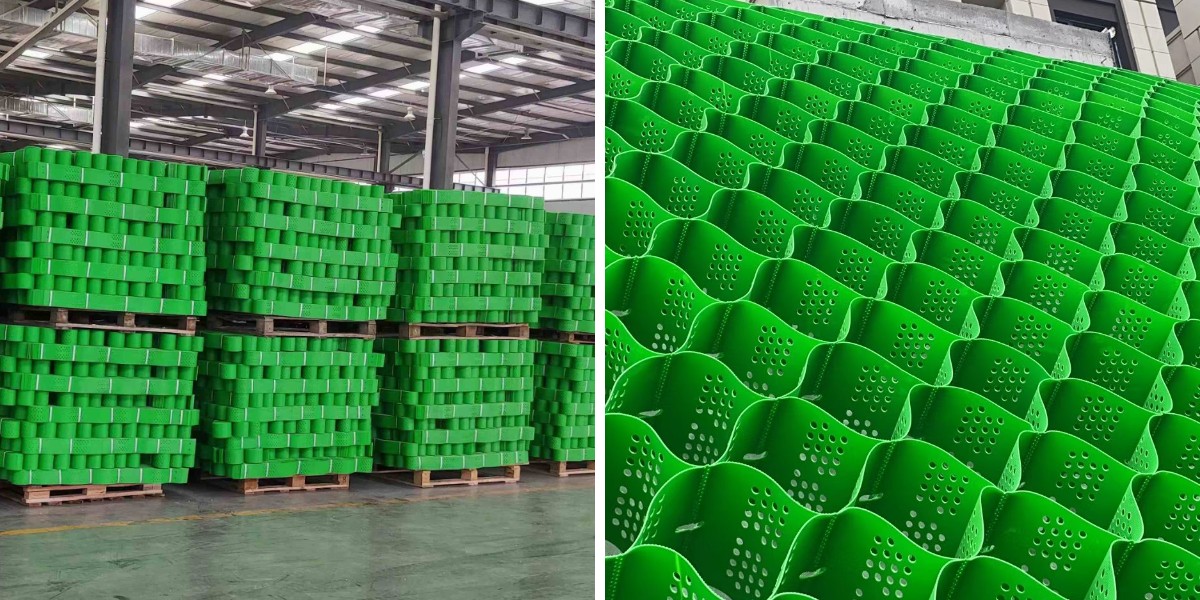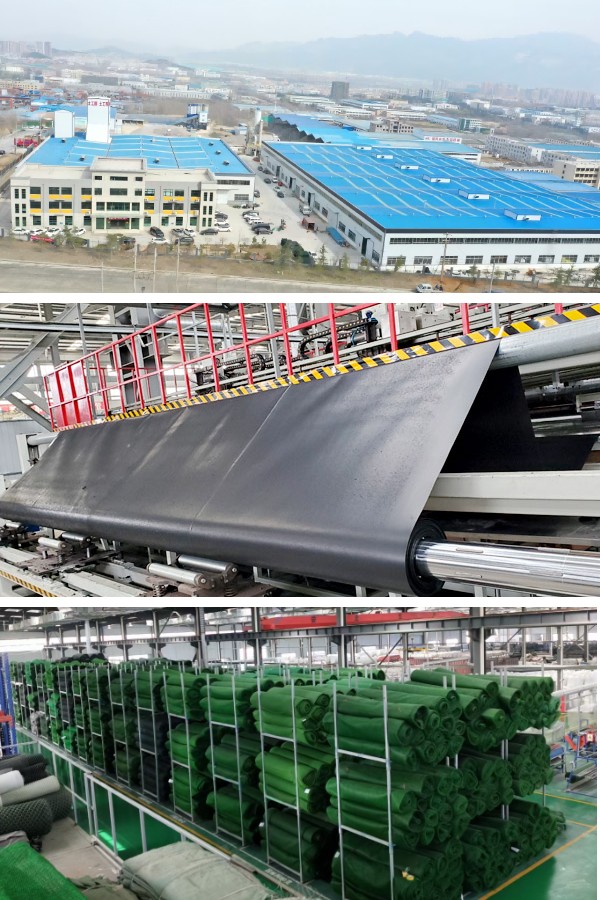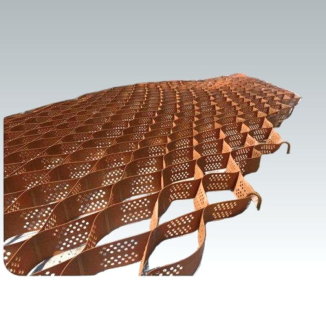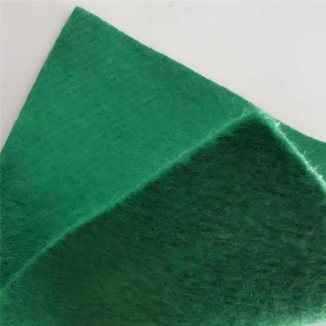Environmental Impact of Geocell Slope Protection: Eco-Friendly Solutions
Introduction: Geocells as a Green Choice for Slope Management
In the realm of slope safety and environmental conservation, geocell technological know-how has emerged as a sustainable choice to normal methods. Geocells are three-dimensional, honeycomb-like constructions made from high-density polyethylene (HDPE) or different recyclable materials, designed to stabilize slopes, manage erosion, and aid vegetation growth. Their special plan and eco-friendly homes make them a key participant in lowering the environmental have an effect on of building and land administration projects. This article explores how geocell slope safety contributes to ecological balance, with a center of attention on purposes like geocell for small-scale projects, slope stabilization geocell, and geocells for erosion control.
Reduced Material Consumption: Minimizing Resource Extraction
Efficient Use of Local Materials
One of the fundamental environmental advantages of geocell slope safety is its potential to make use of nearby fill materials. Unlike usual slope stabilization techniques that require massive portions of concrete, stone, or imported aggregates, slope stabilization geocell structures can be stuffed with on-site soil, gravel, or recycled materials. This reduces the want for extracting and transporting new resources, decreasing the carbon footprint related with fabric sourcing. For example, in rural areas, geocell for small-scale tasks such as outdoor slopes or farmland terraces can use present soil, minimizing the affect on nearby ecosystems.
Lightweight Design Cuts Transportation Emissions
Geocells are light-weight and compact when shipped, requiring fewer transportation journeys in contrast to heavy substances like concrete blocks or metal mesh. A single roll of geocell can cowl a giant place as soon as expanded, decreasing gasoline consumption and greenhouse fuel emissions all through delivery. This is in particular full-size for faraway or environmentally touchy regions, the place minimizing transportation disruptions is critical. Geocells for erosion control, in particular, gain from this efficiency, as they can be transported to hard-to-reach riverbanks or hillsides with minimal environmental disturbance.
Erosion Control and Soil Conservation: Preserving Natural Habitats
Preventing Soil Loss and Sedimentation
Geocells for erosion manipulate are especially superb at trapping soil particles and stopping runoff. The honeycomb shape acts as a barrier, slowing down water go with the flow and permitting sediment to settle inside the cells. This reduces soil erosion, which is a predominant contributor to habitat destruction, water pollution, and loss of agricultural land. In coastal areas, slope stabilization geocell structures defend dunes from wave action, maintaining nesting websites for birds and different wildlife. For geocell for small-scale initiatives like residential gardens or street embankments, this erosion manipulate helps keep soil fertility and prevents mudslides that ought to damage close by vegetation.
Supporting Vegetation Growth
Unlike impermeable substances such as concrete, geocells are permeable and permit for vegetation integration. After installation, the cells can be seeded with native plant life or grasses, which take root in the fill cloth and in addition stabilize the slope. This "green" strategy no longer solely enhances erosion manipulate however additionally restores herbal habitats. Vegetated geocell structures supply meals and refuge for insects, birds, and small mammals, advertising biodiversity. In city settings, geocell for small-scale tasks like park slopes or motorway medians can radically change barren areas into inexperienced spaces, enhancing air nice and aesthetic value.
Low Energy Consumption: From Production to Installation
Energy-Efficient Manufacturing
The manufacturing of geocells requires much less power in contrast to usual slope safety materials. HDPE, the most important cloth used, is recyclable and can be manufactured the use of energy-saving processes. Additionally, many geocell merchandise are made from recycled plastic, decreasing reliance on virgin substances and diverting waste from landfills. This contrasts with concrete production, which is energy-intensive and emits giant quantities of carbon dioxide. By selecting slope stabilization geocell systems, tasks can decrease their embodied energy—the whole power required to produce, transport, and installation materials.
Simple Installation Reduces On-Site Emissions
Installing geocells is a simple system that requires minimal heavy machinery. Unlike concrete pouring, which needs mixers, pumps, and trucks, geocells can be unrolled, expanded, and crammed manually or with mild equipment. This reduces on-site electricity use and noise pollution, making them best for environmentally touchy areas like nature reserves or flora and fauna corridors. Geocells for erosion manage on steep slopes, for example, can be mounted with hand tools, heading off the want for bulldozers that would possibly harm current vegetation. For geocell for small-scale projects, this simplicity additionally lowers labor charges and challenge timelines, encouraging wider adoption of sustainable practices.
Longevity and Recyclability: Reducing Waste Over Time
Durable Design Lowers Replacement Needs
Geocells are designed to stand up to harsh environmental conditions, inclusive of UV radiation, temperature fluctuations, and chemical exposure. Their HDPE building resists degradation, making sure a lifespan of 20–30 years or extra with minimal maintenance. This sturdiness reduces the want for well-known replacements, which would generate waste and require extra resources. Slope stabilization geocell systems, in particular, keep their structural integrity over time, stopping steeply-priced and environmentally negative repairs. For geocell for small-scale projects, this lengthy lifespan skill house owners or communities can make investments in a sustainable answer barring demanding about non permanent replacements.
Recyclable Materials Close the Loop
At the give up of their carrier life, geocells can be recycled into new plastic products, decreasing waste despatched to landfills. This round strategy aligns with international efforts to promote a round financial system and minimize plastic pollution. While typical substances like concrete are challenging to recycle and regularly give up up in landfills, geocells provide a extra sustainable end-of-life option. Geocells for erosion control, which are frequently uncovered to water and weathering, nonetheless keep their recyclable properties, making sure minimal environmental have an impact on all through their lifecycle.
Applications Across Scales: From Small Projects to Large Infrastructure
Geocell for Small-Scale Projects
Geocells are now not restricted to massive development sites—they are equally wonderful for small-scale applications. Homeowners can use them to stabilize backyard slopes, stop erosion in flower beds, or create terraced landscapes. Community companies may appoint geocells for erosion manage in neighborhood parks or alongside nearby streams. These small tasks make contributions to cumulative environmental benefits, lowering soil loss and advertising inexperienced areas in city and rural areas alike.
Slope Stabilization Geocell in Large Infrastructure
In large projects, such as motorway embankments, mining sites, or dam slopes, slope stabilization geocell structures furnish sturdy support. They minimize the want for immoderate grading and heavy materials, keeping herbal topography and minimizing habitat destruction. For example, motorway development frequently disrupts hillsides, however geocells can stabilize the slope with minimal excavation, permitting close by bushes and natural world corridors to stay intact.
Geocells for Erosion Control in Critical Ecosystems
Geocells are specifically precious in defending touchy ecosystems like wetlands, riverbanks, and coastal areas. By controlling erosion, they stop sediment from getting into waterways, which can damage fish and aquatic plants. In riparian zones, geocells crammed with vegetation-rich soil assist filter runoff, enhancing water excellent and assisting aquatic life. Their flexibility approves them to conform to irregular terrain, making them best for maintaining herbal landforms.
Conclusion: Geocell Slope Protection as a Pillar of Eco-Friendly Land Management
Geocell slope safety affords a compelling combination of efficiency, durability, and environmental responsibility. From lowering fabric consumption and transportation emissions to aiding vegetation increase and stopping erosion, geocells make a contribution to a greater sustainable strategy to land management. Whether used in geocell for small-scale projects, slope stabilization geocell systems, or geocells for erosion control, their versatility ensures they can adapt to numerous environments whilst minimizing ecological impact. As the building and conservation industries proceed to prioritize sustainability, geocell science stands out as a practical, in your price range answer that balances human wishes with the fitness of the planet. By deciding on geocells, mission managers, homeowners, and communities can take a sizable step towards defending herbal habitats and constructing a extra resilient future.
Contact Us
Company Name: Shandong Chuangwei New Materials Co., LTD
Contact Person :Jaden Sylvan
Contact Number :+86 19305485668
WhatsApp:+86 19305485668
Enterprise Email: cggeosynthetics@gmail.com
Enterprise Address: Entrepreneurship Park, Dayue District, Tai 'an City,
Shandong Province









